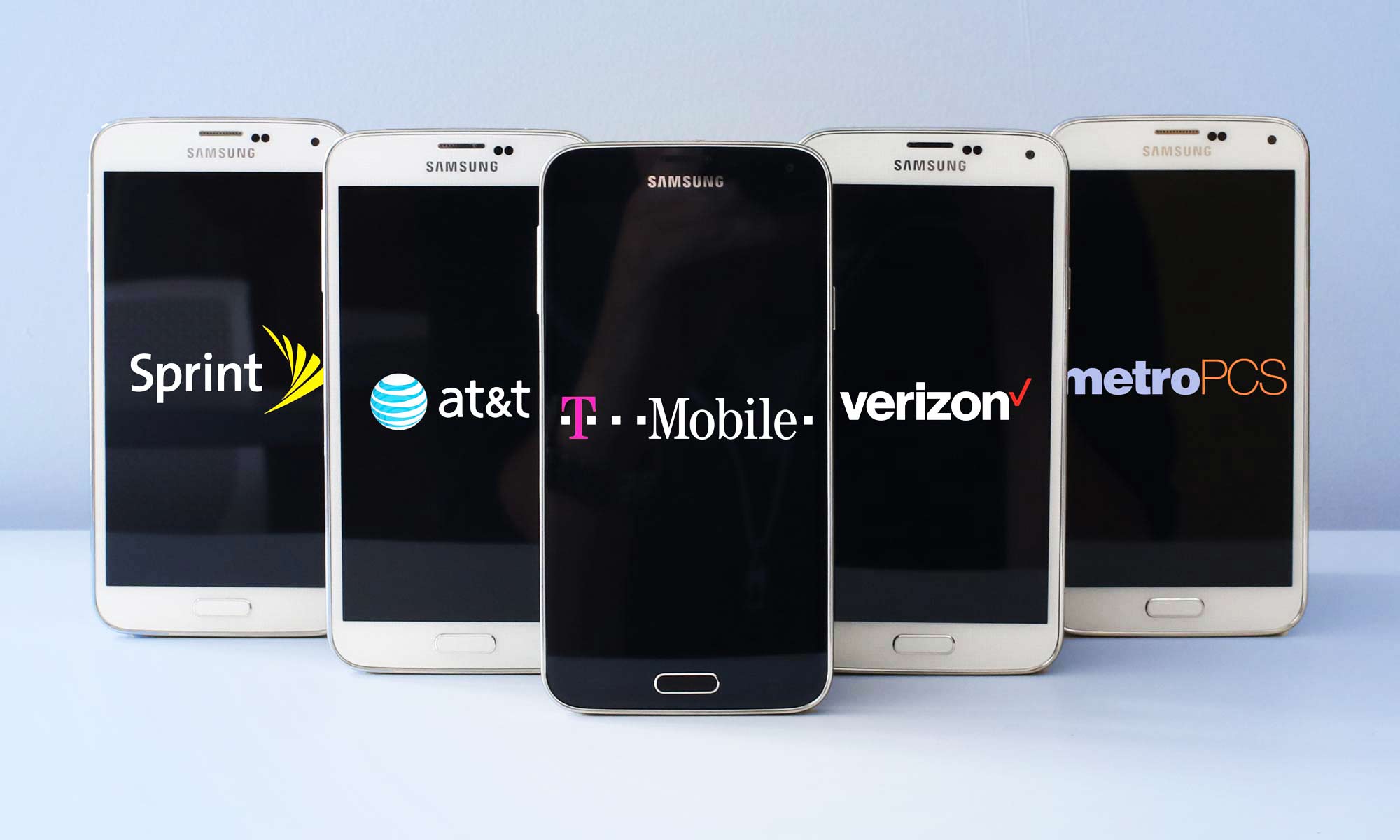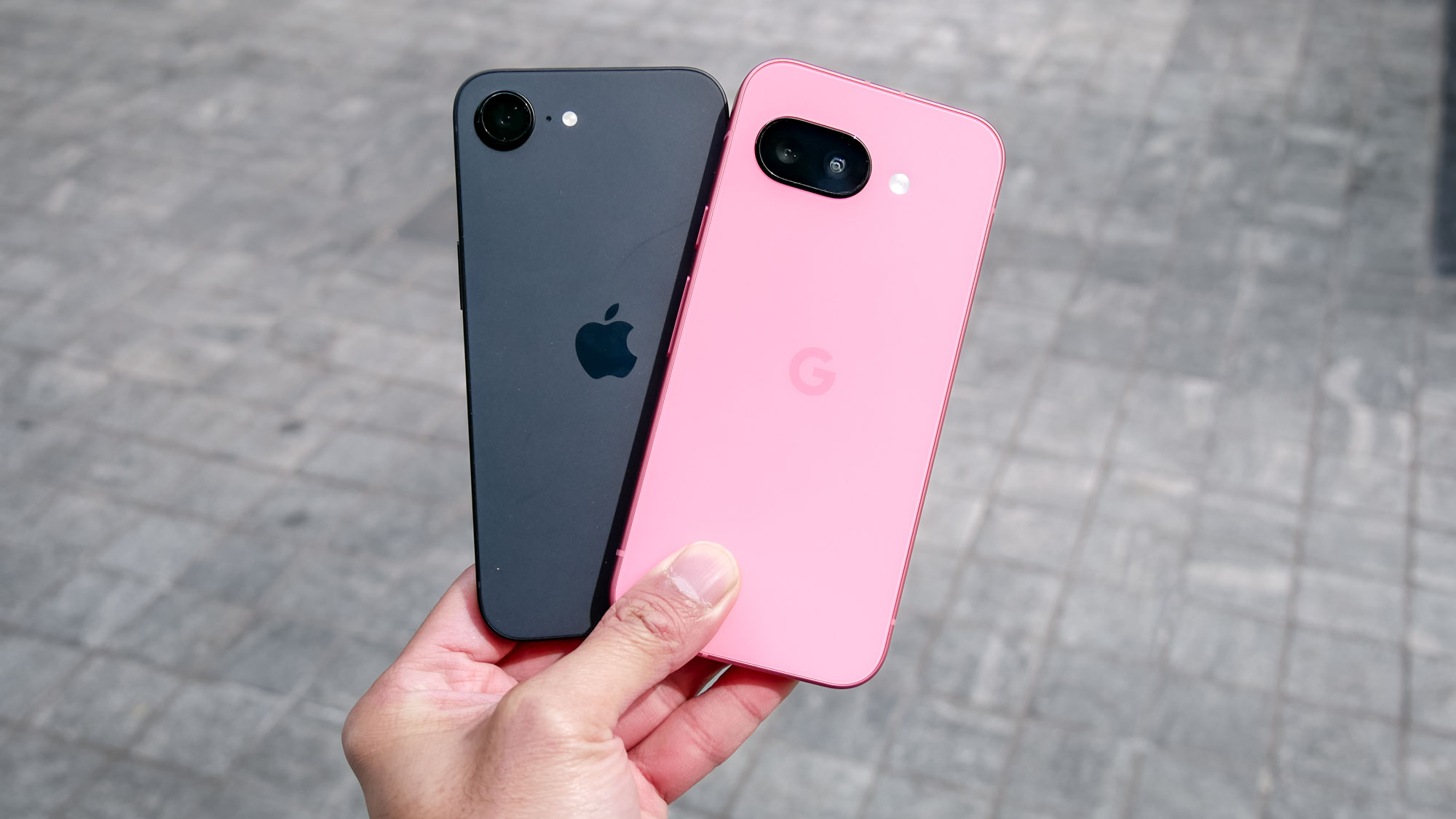How to Switch Smartphone Carriers, and Why You’d Want To
Here’s everything you ever wanted to know about switching to a new cell carrier but didn’t have time to ask.
How to Switch Smartphone Carriers
When it comes to arduous adulting tasks, switching your smartphone service from one wireless carrier to another ranks right up there with root canals. But sometimes, you have to bite the bullet.

Maybe you’ve paid off your phone or found a better deal or decided you just don’t care for the quality of wireless service you’re getting from your current carrier. Whatever the reason, you’re ready to take your wireless business elsewhere. But how do you know how to switch from one service provider to the next? How do you find the best deal? And is switching worth all the hassle in the end?
There are a lot of factors to consider when switching. But if you play your cards right, you could snag a free phone and more data by ditching your old wireless carrier for a competitor.
Before you switch
Deciding whether to switch carriers takes a little research. Here are the questions you should answer.
How do I find out which carrier provides the best coverage in my area?
There’s no point in switching to a carrier that doesn’t provide good cellular coverage where you live; otherwise you’ll forever be wandering around, clutching your phone to your face and wailing, “Can you hear me now?”

Don’t rely on anecdotes from friends and family about their service. The best way is to borrow a phone from one of those friends or family members that’s served by the wireless service you’re scoping out. See what reception is like in the places you frequent. If that’s not an option, use the reliable data Open Signal crowdsources from more than 20 million people to figure out which carrier provides the best service in your area. Just type in your city and pick a provider to see if the wireless signal is strong or weak.
For another source of data, RootMetrics dives into neighborhoods, providing an even more granular look at cellular coverage. The map on that testing firm’s site shows graphical overlays for call performance and network speed, and you can zoom in to find out how your area fared.
Sign up to get the BEST of Tom's Guide direct to your inbox.
Get instant access to breaking news, the hottest reviews, great deals and helpful tips.
MORE: The Best and Worst Phone Carriers
How do I know if my carrier will charge me a fee to get out of my contract?
Carrier contracts have just about gone the way of the dodo, but if you’re still in a two-year agreement and want to get out of it early, your provider will probably charge you a hefty fee for canceling. Not on a contract? You may still have to pay money to your carrier to leave, as we’ll discuss below.

Sprint and AT&T were the last carriers to phase out two-year service contracts in 2016. If you’re still finishing out the last months of your contract, you can easily find out how long you have left and how much it’ll cost you to break it by looking up your account details via your current wireless provider’s website. The amount each of the big four providers charge to break a contract varies by device and days remaining on contract. You can find out more about T-Mobile’s ETF here; AT&T here; Verizon here; and Sprint here.
But while carriers may impose fees to stop their own customers from switching, AT&T, Verizon, T-Mobile and Sprint also have no problem paying off those fees if it means you’ll switch to them. The move was prompted by T-Mobile, which was the first carrier to offer a contract buyout back in 2014.
There's no point in switching to a carrier that doesn't provide good cellular coverage where you live.
Even with contracts disappearing, T-Mobile still promises to reimburse you for your previous provider’s early termination fee in the form of a prepaid MasterCard of up to $650 per line. Verizon, AT&T and Sprint offer similar programs. Note that each carrier reimburses you in the form of a prepaid debit card that you can’t redeem for cash. Also, the card arrives weeks after your final bill arrives from your previous provider, so you’ll still need to foot the bill for switching -- at least initially.
I’m not on a contract. Will I owe money to my current provider if I switch?
It depends on whether you bought a phone from your carrier on an installment plan or if you paid full price for the device upfront. If you’re still paying off the phone, then you’ll need to pay the remaining balance in full before switching.
Good news: the same reimbursement programs for early termination fees that T-Mobile, AT&T, Verizon and Sprint offer also cover device payment plans. You’ll have to trade in your old phone, though, and upgrade to a new one. If you want to keep your old phone and sell it, that’s something to consider before switching if your device isn’t fully paid off.
When to switch
Timing is everything. Here’s how to figure out which time is the right time to look for a new wireless provider.
Should I wait to switch carriers until a new phone I want is released?
If you don’t care about having the latest iPhone or Samsung device, you can switch whenever you’d like. But when new flagship phones are released, the four major carriers go into overdrive to win new customers with all kinds of deals.

Some of those offers can sound pretty sweet, like last fall, when carriers were ready to offer a brand-new iPhone 7 when you traded your old phone and signed up for a new plan. Just read the fine print: Often, you’ll be locked into a two-year service agreement for that free phone and will have to hand it back if you want to switch to another carrier.
MORE: Best Galaxy S8 Deals Right Now
In general, the best time of year to upgrade to a new phone and switch carriers at the same time is when a major flagship launches. For the iPhone, that’s usually in the fall. The Galaxy S lineup usually sees a new arrival in the spring, as does LG’s flagship. Samsung and LG tend to update their bigger screen Note and V series phones in the fall. You’ll also see promotions tied to the beginning of the school year and the holidays.
If you time it right, you can trade in your old phone, get out of your old contract and receive a brand-new phone, all on on your new carrier’s dime.
“With the iPhone 8 coming out in late September, timing is everything,” said Christine Gallup, head of content and outreach for the cellphone comparison website WhistleOut. “If you’re interested in getting the latest and greatest, it’s best to get it right when it’s been launched because the carriers are in a feeding frenzy.”
Gallup said there’s also an ideal time of month to switch carriers. Check your billing cycle dates. If you wait four days before the end of your current billing cycle and then make the switch, you’ll reduce the odds of paying two cellphone bills in a month.
Which carrier offers the best deals for old phone trade-ins?
If you time it right, you can trade in your old phone, get out of your old contract and receive a brand-new phone, all on your new carrier’s dime. The deals are typically pegged to new product launches.
Unfortunately, carriers don’t take just any old phone — usually trade-in offers are for customers with fairly new devices looking to upgrade every year or so. Keep an eye out when new phones from major players like Apple, Samsung and Google are released to get the most bang for your buck (or cash for your phone, as it were). Tom’s Guide also keeps close tabs on deals aimed at switchers, and we get the word out when there’s a particularly appealing offer.
How do I compare data plans to find the best deal?
This requires some research on your part. First, decide whether you’re looking for a single line of data or a multi-line plan for families. Then, figure out how much data you typically use in a month. You can do that by looking at your phone bill. Sign into your online account and go over the last three months of data usage. You can also find that information in your paper statement, if you still get one. That will help you figure out how much data you need from your new carrier. You can also call the company directly for answers. Tom’s Guide has compared plans from a wide array of carriers and has come up with the best picks for unlimited data, families and prepaid users. If you’re looking to save money, we also have the best cellphone plans under $40.

These days, carriers are pushing unlimited data plans, which offer you all the LTE data you could ask for. (Or at least they do up to a point. Go over a certain amount — it varies from carrier to carrier — and your wireless provider might throttle your speed, though you won’t be charged an extra fee.) If you find yourself using less than 6GB of data, though, you can save money by going with a cheaper tiered data plan. Verizon and AT&T still offer tiered data, and if you broaden your search to prepaid and discount carriers, you can save even more money if your monthly data use is low.
WhistleOut’s Gallup said people tend to focus on AT&T, T-Mobile, Verizon and Sprint when looking to switch carriers, but “there are a lot more options than just the big four.” Discount wireless carriers like Cricket and MetroPCS use the same networks as AT&T and T-Mobile , and you can usually find a lower-priced plan. Gallup said she cut her phone bill in half by switching to Cricket.
MORE: Best Prepaid Phone Plans: MetroPCS vs. Boost vs. Cricket
Some carriers offer special data plan promotions tied to specific phone launches, so keep an eye out for good deals around flagships like the Galaxy Note and iPhone. Sprint is also fairly aggressive about offering low introductory rates to entice you to join its fourth-ranked network; just be aware that the introductory rates revert to what Sprint regularly charges after a set time limit (usually about a year).
WhistleOut compares 100,000 cellphone plan combinations from 30 carriers if you’d rather let someone else handle the legwork for you.
How to switch
You’re ready to take the plunge. Here’s the information you need to have on hand.
Do I need to sign up for a new plan in person or can I do it online?
You can switch carriers by signing up for an account with your new carrier online, but many people prefer the reassurance of having a customer service rep walking them through the process in person. (Although nothing is more awkward than breaking up with your old carrier over the phone while in your new carrier’s store.)
Should I cancel my old service first?
No, no, no, no and no. Don’t cancel your existing service until your new cellphone plan is activated and your phone is ready to use. This will save you a lot of trouble — trust me. It can sometimes take longer than you might expect for your new carrier to port over your existing phone number and data from your old phone, and you don’t want to miss any important calls or lose any information in the transition. Your new carrier will cancel your old service for you when your phone and service are ready to go.
How do I keep my phone number?
Carriers are required by law to allow you to keep your local phone number, but that doesn’t apply to phone numbers outside your current geographic area — something to consider if you’ve moved across the country and want to port your old number to a new carrier.
Carriers are also allowed to charge you for porting numbers over to their service, but few do. They want your service, after all. The porting process is part of switching, so just tell your carrier you want to keep your current phone number and they’ll do all the work for you.
Caitlin is a Senior editor for Gizmodo. She has also worked on Tom's Guide, Macworld, PCWorld and the Las Vegas Review-Journal. When she's not testing out the latest devices, you can find her running around the streets of Los Angeles, putting in morning miles or searching for the best tacos.
